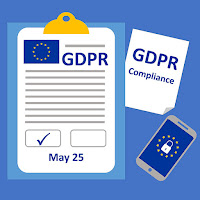
Like most companies, our team spends a little time during late December and early January for reflecting on successes (and thinking about what we can do better), identifying new opportunities for growth, and setting goals.
As part of our annual analysis process, we check our blog results. Investigating to learn which posts have been the most popular allows us to draw insights on which topics our clients most want to learn about and helps us be more strategic when planning future blog article content.
Blogging in 2019? Need help coming up with topics?
Learn more about how to come up with blog post ideas
Learn more about how to come up with blog post ideas
TBH Creative’s 8 most popular blog posts from 2018
#8 How to write the best email subject lines ever
 A subject line is the first thing email recipients see, and HubSpot estimates that nearly 50% of people open emails based on subject lines alone.
A subject line is the first thing email recipients see, and HubSpot estimates that nearly 50% of people open emails based on subject lines alone. If no one is opening your emails, no one sees your great content. So—how can you craft the perfect email subject line? By focusing on meeting your users’ needs. The success of a subject line is greatly influenced by your target audience. What works for one won’t always work with another—and that’s what makes identifying universal email subject line best practices so challenging.
Read more about how to optimize your email subject lines »
#7 What the best hospital websites have in common
 When it comes to hospital website design, there isn’t one cookie cutter approach that works for all providers, but the best hospital websites often have a few things in common, including:
When it comes to hospital website design, there isn’t one cookie cutter approach that works for all providers, but the best hospital websites often have a few things in common, including:- Online scheduling
- HIPAA-compliant patient forms
- Wayfinding tools for patients and visitors
- Libraries of digital health resources
Read more about which features are part of the best hospital websites »
#6 What is the GDPR—and, how does it affect my website?
 Notice an influx of privacy policy notifications this year? Get a lot of emails referencing something called GDPR? There’s a good reason companies—big and small—have been trying to get your attention.
Notice an influx of privacy policy notifications this year? Get a lot of emails referencing something called GDPR? There’s a good reason companies—big and small—have been trying to get your attention.This primer outlines how the GDPR may impact your company (and its website) and covers how to start making sure your website is in compliance.
Read our guide to GDPR and your website »
#5 Webpage metadata tips and examples for 2018
 A well-designed website has more than just good looks. But, most users never see most of what makes websites successful and user-friendly.
A well-designed website has more than just good looks. But, most users never see most of what makes websites successful and user-friendly.We keep the code, style sheets, and servers behind the scenes, and that’s how it should be. One exception? Metadata.
Read our expert tips for metadata »
#4 Navigation design showcase: Choosing the right navigation pattern for your website
 Choosing the right navigation design depends on the unique needs of your website. To make a more informed decision when selecting the best approach, it’s helpful to be aware of the different types and styles of navigation available to you.
Choosing the right navigation design depends on the unique needs of your website. To make a more informed decision when selecting the best approach, it’s helpful to be aware of the different types and styles of navigation available to you.In this article, we explore the most common navigation design patterns, including real-life examples of each navigation type.
Read more about the importance of website navigation »
#3 10 ways to improve your website performance
 Speed is everything. The Internet is different from the real world. Customers are won or lost in a fraction of a second. Creating a website is easy, but if you want to reach the top online, be prepared to do a lot of hard work.
Speed is everything. The Internet is different from the real world. Customers are won or lost in a fraction of a second. Creating a website is easy, but if you want to reach the top online, be prepared to do a lot of hard work.A one second lag in page loading time may result in:
- 11% drop in page views
- 16% decrease in customer satisfaction
- 7% drop in conversions
Read more about ways improve your website »
#2 Improving website performance with image optimization: A beginner’s guide
 Images are powerful tools for your website. They help tell stories, elicit emotion from your audience, and increase conversions. It would be difficult to create an effective website without images.
Images are powerful tools for your website. They help tell stories, elicit emotion from your audience, and increase conversions. It would be difficult to create an effective website without images.However, using images requires a balance between the size of your images and website performance. The purpose of imagery on a website should be to enhance your content and improve the user experience. If images are negatively impacting the performance of your website, they begin to do the opposite.
Read more about how to optimize images for the web »
#1 Getting started with SVG animation using CSS
 Chances are good that during normal web browsing you’ve come across at least one website that uses animation in some form. Animation serves a multitude of purposes—it can make your website more dynamic, increase user engagement with your content, and improve the overall design. Plus, it’s fun!
Chances are good that during normal web browsing you’ve come across at least one website that uses animation in some form. Animation serves a multitude of purposes—it can make your website more dynamic, increase user engagement with your content, and improve the overall design. Plus, it’s fun!The good news is that adding animation to your website is easier than ever, especially if you leverage CSS techniques to manipulate SVG graphics. When you combine the capabilities of CSS animation with SVG, countless opportunities open up for integrating interactive elements into your website.
Read more about using SVG and CSS »
Want to stay in the know about all things related to web development, web design, and digital marketing? Subscribe to TBH Creative’s blog for short, once-a-month emails with links to all of our recent posts.
Get marketing insights sent straight to your inbox »
